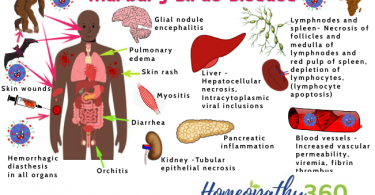Over one hundred years before the present interest in psychosomatic medicine, Hahnemann insisted upon the importance of “mental” symptoms in homoeopathic prescribing for physical disease.
Since then, the advance of orthodox medicine-which has proceeded at a far beyond the conception of anyone living in Hahnemann’s time-has shown an ever-widening divergence between physical and psychological medicine,
culminating on the one hand in the minute exploration of the human body which can be made by modern pathological, biochemical and cytological
techniques, and the changes which can be wrought in it by an annually increasing array of drugs; and on the other hand in an equally profound, if less exact, exploration of the human psyche by methods developed since the end of the last century by depth psychologists who include notably Freud, Groddeck, Adler and Jung.
There is really no meeting point between physical and psychological medicine, unless it be that which exists in the personality of the doctor himself- and all too often this tends to have been strangled by the rigid scientific training he received. Hence the complaint sometimes heard that patients are treated only as sick bodies, and that nothing is done to heal the corresponding sickness of their minds. (I have not often heard the opposite complaint, that the mind is treated and the body neglected, but no doubt it can occur, and when it does, the: organic condition is mis-diagnosed as a psychological one.)
A doctor coming fresh from orthodox medicine to Homooopathy is deligl
to find that the case history at least takes account in a fairly detailed wa
physical and psychological symptoms-with, thanks to Hahnemann, Kent,
others, an emphasis on the psychological. At first he will tend to give more cr
to the therapeutic case history than to the action of the remedy. We have all
the patient who says: “Doctor, I feel better just for talking to you”, and does, too. When from experience the remedy is found to be effective also-and effective in a way that is closely related. to the patient, his symptoms, and the doctor’s interpretation of them-then surely it can be claimed. that a truly
medicine has been found.
Explaining this phenomenon is very difficult for our modern minds. II
century and a quarter since its discovery, Homeeopathy has steadfastly res
interpretation by modern scientific theories, which may be just as well, since
frequently change and supersede one another. We are reduced to saying it v
because it works, and this cannot be expected to persuade sceptics to undei
the considerable labour needed to give it a fair trial.
A clue may be gained if we compare Homoeopathy with analytical psychology -the system of depth psychology which we owe to the late C. G. Jung. Depth psychology is accepted with reservation by the orthodox medical profession, but has found much more enthusiastic adherence in the world of commerce; so that really it forms part of our daily lives, more perhaps than we would be ready to admit. No doubt useful comparisons could be drawn between Homoeopathy and the psychologies of Freud or of Adler, but I have chosen to speak of Jung’s work because I am more familiar with it, and because it goes deeper and presents more interesting points of contact.
Jung held that man’s conscious personality forms only a small part of his total psyche; that his mental health and growth depend upon a proper relationship between conscious and unconscious; and that the purpose of his life, psychologically speaking, is first to develop his personality in relation to the outside world, and then to relate it to the inner world of his unconscious contents. Failure to achieve this aim results in psychological illness, which may manifest in intellectual, emotional, or behaviour disorders. Treatment of such disorders is by analysis, in which the doctor, having first ascertained his patient’s symptoms and history, proceeds to examine his dreams and fantasies, the points at which unconscious material ascends into consciousness. By a prolonged serial study of dreams, analyst and patient become aware of what is wrong, and may be able to make adjustments to right it. These are effected mainly through a deep relationship which forms between doctor and patient, known as the transference; but the very fact of bringing unconscious conflicts into consciousness often leads to their solution.
Now consider the homoeopathic treatment of a physical disorder. It can, I
think, be held that life consists of adjustment to the environment, coupled with growth and development of the faculties. Whilst the body is healthy, its functions remain unconscious, but in illness symptoms appear. These can be considered as physical dreams, the body becoming conscious of its own disordered function. Like the analyst, the homoeopathic doctor takes a careful history of events leading up to the illness, and he studies symptoms (as the analyst does dreams) to give him a picture of his patient’s internal pattern, as it were. To the homoeopathic doctor the symptom-picture evokes a remedy which, when administered, restores the balance of health, often after increased externalization of the symptoms. The transference situation is not an overt feature of Homoeopathy; instead an actual substance-the homoeopathic remedy-is transferred from doctor to patient.
Analysts make it a rule to undergo analysis themselves before taking up their work, so as to be fully aware of the process through which their patients are going. Similarly, many homoeopathic doctors take part in proving the remedies, and this practice was strongly recommended by Hahnemann.
Homoeopathic remedies can be compared with dream images in the following way. A unique feature of Jung’s psychology is his postulation of the Collective Unconscious. This is a level deeper than the personal unconscious, where forgotten childhood memories are stored, and it is held to contain the racial memories of the individual in the form of archetypes-patterns which can perhaps be compared on the physical level to the DNA of the cell nucleus. When, through illness or analysis, an archetype is “constellated”, it manifests in dreams as an “archetypal image” clothed in material which is recognizable to the consciousness of the dreamer. Archetypal images may take the form of people or things well known to the dreamer which he relates to more powerful historical or mythological subjects. These, in their turn, indicate strong influences which are important by reason of their presence, or absence, in his life: the Shadow, the Anima, the Great Mother, the Wise Man, the Hero, the Child, and the Mandala, are among the most important.
It is perhaps not too fanciful to suggest a similar process for the indication of
homoeopathic remedies. Here the “patterns” may indeed reside in genetic
material, disturbance of which produces a symptom calling for a remedy from the outside world whose pattern is similar to that of the disturbance.
Remedies can be studied in all their aspects: a plant has a certain habitat,
colour, shape of leaves, produces certain chemical substances, flowers at a particular time of the year, and upon a particular type of soil. An animal moves in a certain way, feeds upon certain foods, is active by night or by day; a mineral is hard or soft, crystallizes to a particular shape, and so on. In the same way the figures occurring in dreams can be analysed to determine whether they relate to real people, to historical personages, or to characters and situations from the traditions of many different races and places-and it is noteworthy that these figures repeat, resemble and overlap one another more the farther they are traced back-as if, indeed, they had a common origin. From here it is but a short step to analysing the remedies, as Whitmont has done in his masterly essay upon Sepia; and to prescribing for the archetypal images, as Twentyman demonstrated in the art gallery at Amsterdam …
Is Sulphur a remedy for extroverts, and Natrum mur. for introverts, as I have
reason to believe they are? Is Carbo veg. a life saver because the four valencies of the carbon atom represent a Mandala?
What would have been the effect upon mythological history of giving Lachesis to Hera, Calc. carbo to Aphrodite, or Nux vomica to Mars?
This could all be dismissed as a fascinating intellectual game, but I should
like to suggest that it is more: that a study of analytical psychology would widen and deepen the insights of Homoeopathy, and the practice of Hooeeopathy would bring to analysis the extra dimension needed to make it truly a medicine for the whole man-and for all men, since it does not require the mental and material qualifications implicit in the candidate for analysis. Beyond this, a combination of the two approaches could be a most useful instrument with which to study the elusive problem of the relationship of psyche with soma.
I must apologize to those who may feel that I have approached a serious
subject with undue levity. I know that analytical psychology merits a lifetime’s
serious study, and that it would take another lifetime to become expert in the
practice of Homoeopathy. My excuse for attempting to synthesize the two in
twenty minutes is simply the hope of provoking further interest in this direction.
It is said that patients visiting the temple of lEsculapius in ancient Greece
used to sleep under the porch over-night, during which the god sent them a
dream. Next day they related their dream to the priest-physician, who inter-
preted it by prescribing a remedy. Perhaps what I have been saying amounts to no more than this.
Plus ca change, plus c’est la meme chose.
Author: MARIANNE HARLING, B.M., B.eR., M.F.ROM.
A paper read at the Triennial Congress of the International Homreopathic League, London, July 1965.
Source: The British Homoeopathic Journal, January 1966.





